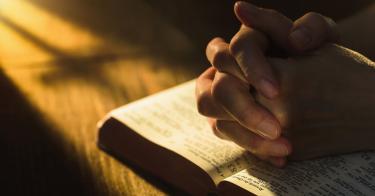“First, do no harm.” That maxim from Hippocrates has universal appeal. Yet today, it is being used as the title of a bill that would do great harm to one of our most cherished natural rights: Religious freedom.
This bill seeks to dilute the substance of religious freedom to nothing more than speech or private worship and to reduce its significance to nothing more, and often less, than other political priorities.
Religious freedom has long been understood to cover more than mere speech and worship ceremonies. Colonial laws, and then the U.S. Constitution itself, protected the “free exercise” of religion. Similarly, the 1948 Universal Declaration of Human Rights, to which the United States is a signatory, includes not only a person’s freedom of belief but the freedom, “either alone or in community with others and in public or private, to manifest his religion or belief.”
To America’s Founders, the significance of religious freedom was as deep as its substance was broad. Religious freedom, they said, is a natural and inalienable right that requires more than mere toleration from government. It is, in James Madison’s words, “precedent, both in order of time and in degree of obligation, to the claims of civil society.”
The 1993 Religious Freedom Restoration Act (RFRA) reflects this centuries-old view of the substance and significance of religious freedom. Like the First Amendment, it protects the “exercise of religion” and makes it difficult for government to impose burdens on its exercise.
The genius of RFRA, and the reason it was passed with only three negative votes in either the House or Senate, is that it stops there. RFRA itself does not settle any conflicts between government and how people exercise religion, but sets the standard that courts must use to do so. Don’t believe any claim that “RFRA allows” this religious practice or “RFRA prohibits” that government action. RFRA does not determine winners or losers in these conflicts, courts do.
On Feb. 28, Sen. Kamala Harris, California Democrat, introduced S.593, the so-called Do No Harm Act. The bill, which has already attracted 24 Democratic co-sponsors, would gut RFRA.
Today, all government actions must meet the RFRA standard. It should be difficult for government to interfere with religious practice because that right is so important. But difficult does not mean impossible. Government may interfere with the exercise of religion if it uses the “least restrictive means” to achieve a “compelling” objective.
Under S. 593, government laws or regulations in many areas would be completely exempt from the RFRA standard. Government could, and almost certainly would, completely ignore any impact on religious freedom. Not surprisingly, one of those areas involves “access to, information about, a referral for, provision of, or coverage for, any health care item or service.”
Under RFRA, religious organizations or institutions that do any of those things may at least make the argument that it burdens the exercise of their religion. The government would then have to explain why its objective is compelling and why it cannot accomplish that objective any other way. Religious organizations may win or lose, but at least RFRA gives them a way to defend their rights. S. 593 would deny anyone the chance to argue that government ever goes too far. The government would always win.
The proposal even says that RFRA should not allow any “party” to discriminate against others, “including persons who do not belong to the religion or adhere to the beliefs of that party.” Think about that. Today, RFRA allows churches or organizations to challenge federal laws or regulations that would force them to hire or include as members persons who oppose their beliefs. The Harris bill would allow the government to make that choice instead.
The Harris bill stands on its head the substance and significance of religious freedom as it has been understood since the 17th century. It would signal that religious freedom is no more important, and in many cases far less important, than a garden-variety political agenda. And it would turn RFRA, the most important law protecting religious freedom, inside out.
There’s also a very disturbing irony here. Three of the bill’s co-sponsors — Patrick Leahy of Vermont, Dianne Feinstein of California and Patty Murray of Washington — were in the Senate in 1993 and voted for RFRA, the law they now want to eviscerate.
They and three other co-sponsors — Dick Durbin of Illinois, Jack Reed of Rhode Island and Ron Wyden of Oregon — were in the Senate in 1998 and voted for the International Religious Freedom Act. That law declares that “the right to freedom of religion undergirds the very origin and existence of the United States.” Freedom of “religious belief and practice,” they said, “is a universal human right and fundamental freedom.”
Not any more, at least if they now have their way.
This piece originally appeared in The Washington Times




